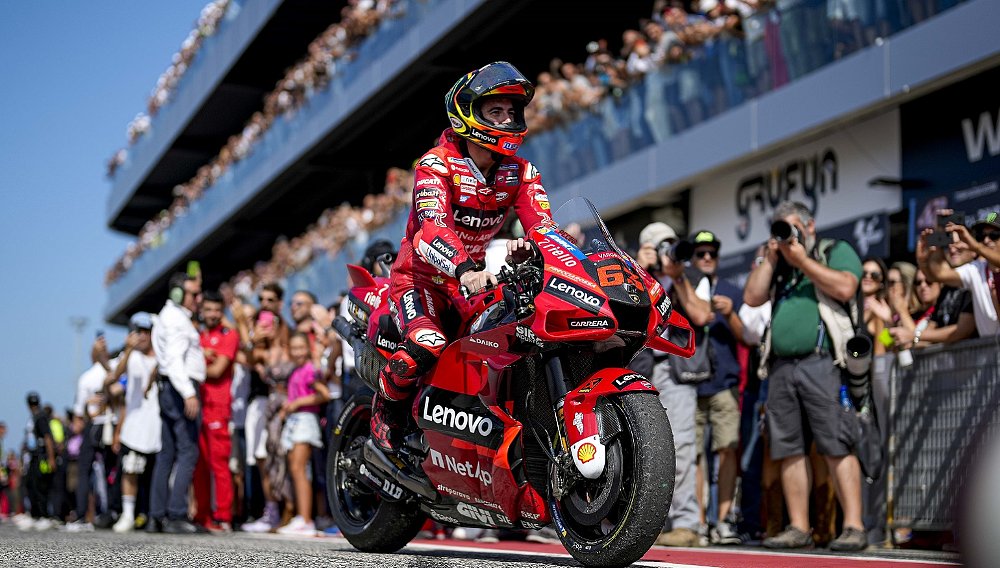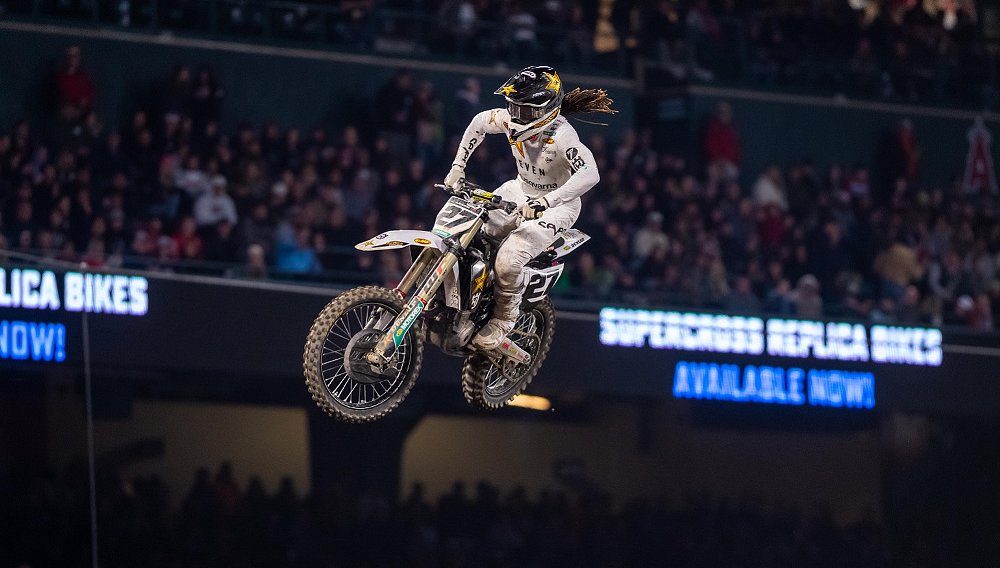The renamed Ducati Cup World Championship begins this weekend at the Autódromo Internacional do Algarve in Portimão, Portugal.
OK, so it's not really that bad. MotoGP is still far from being a one-brand world championship, but as we release the clutch and accelerate into the 2023 season, the field does have a definite red tinge to it. Especially at the front.
First, it's just numbers. Of the 22-rider field, eight are on Ducatis (four on GP23s, four on last year's GP22), four are on Hondas, four are on Aprilias, four are KTM/GASGAS, and just two are riding Yamahas. But the Ducatis are not just numerous. They're also fast.
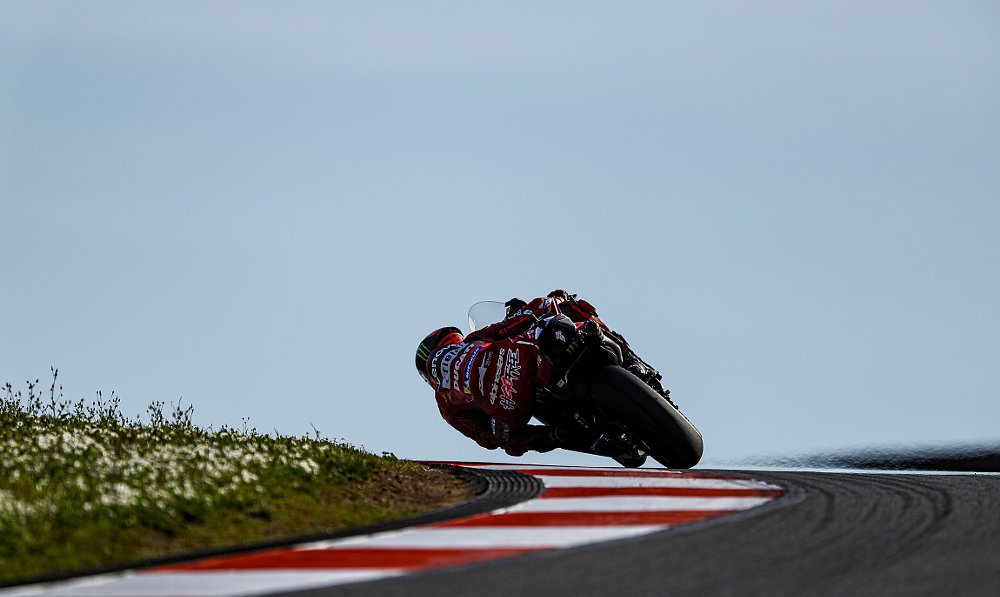
Looking at the final combined practice times from the two-day test at Portimão, seven of the top eight riders are on Ducati Desmosedici GPs. At the front was defending champion Pecco Bagnaia, with a best lap time of 1:37.968. That broke Bagnaia's own lap record at Portimão, set in qualifying in 2021, by 0.757 seconds. It was also the only lap under the 1:38 mark.
So a cursory glance may lead you to believe that Ducati riders will run the table this year, but it's never that simple. First, we have to insert the usual disclaimer that preseason testing is not the same as racing and some bikes do better at certain tracks than at others. Second, yes, the Ducati hordes are fast, but so is everyone else. The other striking data point from the Portimão test is how close all the top riders are. Nineteen riders finished with a best lap within 1.1 seconds of Bagnaia's best time. 2021 champion Fabio Quartararo's best lap was just 0.334 seconds back and he finished third.
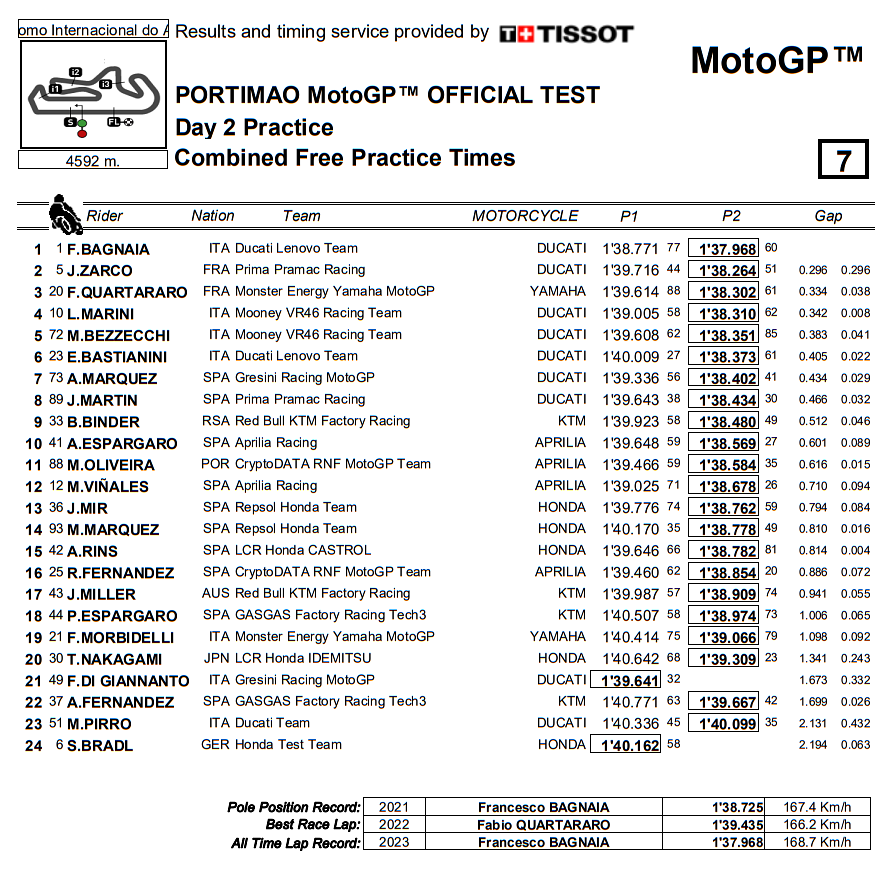
For the other brands, however, that may be putting a brave face on a difficult situation. Discussing the preseason testing on the Paddock Pass podcast, experts Adam Wheeler, Steve English, Neil Morrison, and David Emmett all agreed that the last time a manufacturer went into a season in such a dominant position was Honda in 2003. (That year, by the way, Honda riders won 15 of 16 races, led by Valentino Rossi.) So Ducati is stronger than anyone has been in 20 years.
More than the fastest lap times, a couple of other more subjective points illustrate Ducati's advantage. One thing that has to worry his challengers is how comfortable Bagnaia is, despite his speed. Because the factory Ducati Lenovo team had everything dialed in, Bagnaia had time at the test to focus on different strategies for the Saturday half-distance sprint races while others were testing new parts or trying to find solutions to weak points.
The other striking anecdotal evidence from the preseason was perhaps the smile on the face of Álex Márquez. He spent the last two years struggling on Hondas, first for the factory Repsol Honda team and then for the LCR Honda IDEMITSU team, finishing 16th and 17th in the points. Now on a Ducati, he's the happiest rider on the track and finished the Portimão test with the seventh-fastest time.
You need not have been following MotoGP that long to remember a time when riders moved to Ducati to see their careers wither. Nicky Hayden, Valentino Rossi, and Jorge Lorenzo are just three world champions who were either unable to win on a Ducati or struggled to come to terms with the Desmosedici. Now, the tables have completely turned.
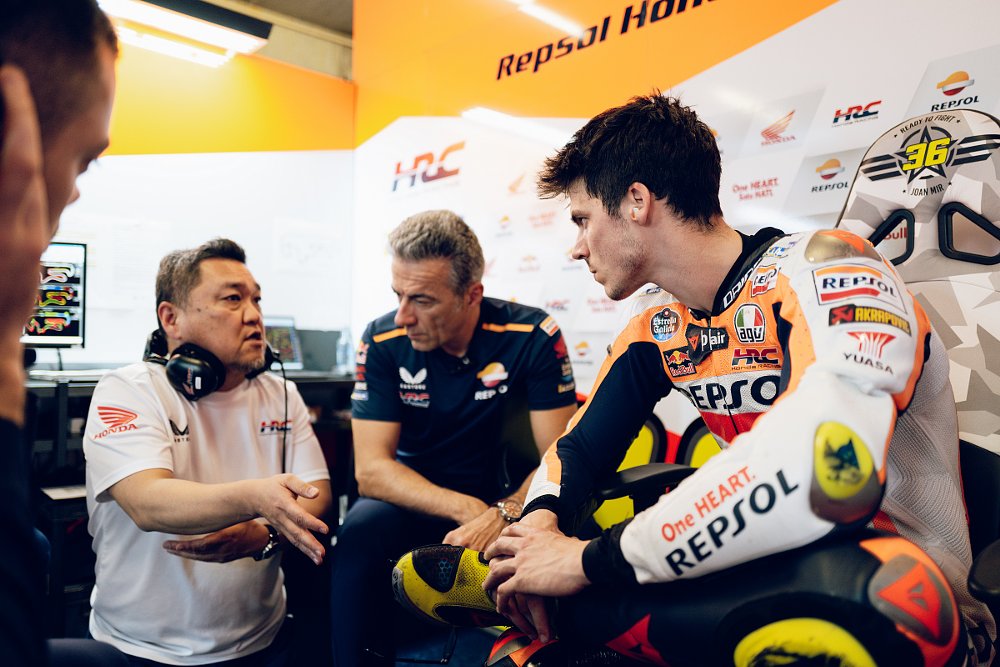
The rise of Europe, the decline of Japan
As recently as the 2015 season, Japanese motorcycles won every premier-class race. In 2022, European makes won 15 of the 20 races and — just a few years ago you could have gotten incredible odds from the London bookies on this — the only manufacturer that didn't win a race was the once-dominant Honda.
What happened? Part of that is merely the improvement of the Ducati team under Ducati Corse General Manager Gigi Dall'Igna for nearly a decade. As for the Japanese, Kawasaki is content to compete in World Superbike and Suzuki decided last year its money is better spent in other places than MotoGP (and left in style with Álex Rins winning the last race Suzuki contested).
That leaves Honda and Yamaha, both quite diminished.
Success can be dangerous. In 2007, Casey Stoner, with his otherworldly ability to ride a motorcycle beyond its limits, won the championship on a Ducati. That win allowed Ducati to go on believing there was nothing wrong with the bike, even though no one else could win on it. More recently, Honda has developed its RC213V to the point where only Marc Márquez, with his equally unworldly talent, can win on it. So with Márquez hampered by injuries the last two years, you end up with a winless season for Honda, a result that was once unthinkable.
Is Yamaha doing the same thing? Maybe. It's hard to tell because satellite teams have moved away from Yamaha to the European brands, so in 2023 there are only two YZR-M1s on the grid, the Monster Energy Yamaha factory team bikes ridden by Quartararo and Franco Morbidelli. (And with the departure of Suzuki, the Yamahas are also the last two inline-four engines in the field, as the V-four takeover of MotoGP is nearly total.)
Quartararo struggled on the first day of the Portimão test but then the team reverted to 2022 settings and he moved up to third on the charts on the second day. Not so for Morbidelli, who finished down in 19th place. Has Yamaha taken the M1 development in a direction that relies on Quartararo's skill? Is Yamaha also building a motorcycle only one man can ride? With only two Yamahas left in the fight, it will be hard to say, no matter the outcome.
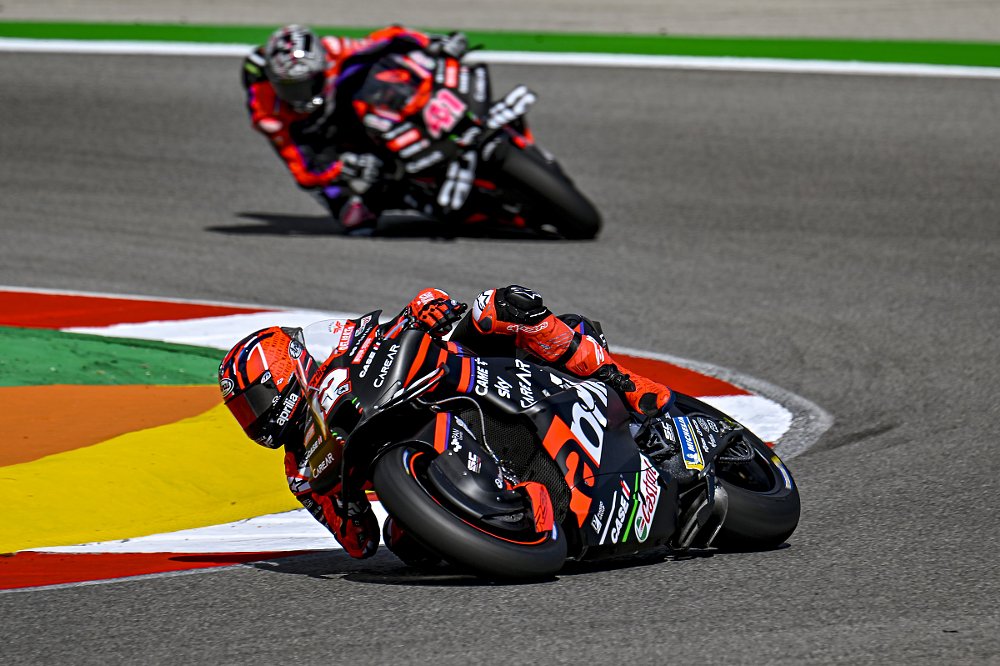
At least Yamaha has Quartararo. None of the Hondas were in the top 10 at Portimão. Last year was the first time in four decades that Honda failed to win a premier-class grand prix. Nobody doubts that Márquez will find a way to be competitive, but the question will be whether his new Repsol Honda teammate, 2020 champion Joan Mir, or either of the two LCR Honda riders can do anything with the bike.
Red Bull KTM Factory Racing team rider Brad Binder was had the fastest lap of anyone at the Portimão test who wasn't riding a Ducati and whose name wasn't Fabio. He was followed by three Aprilias.
What's new in 2023
Aerodynamic advancements have been a big part of Ducati's success and the teams continue chasing any advantages they can find. The most obvious item tested — and the one that drew the most comments, mostly uncomplimentary, on social media — was a large rear wing Yamaha tried. In the end, it didn't make any difference, Quartararo said, so they scrapped that idea.
Less obvious but more important are the aero changes being tried at the bottom of the motorcycles, where diffuser ducts and reshaped fairing lowers are being used to try to create downforce and suck the bike down into the pavement for better cornering grip.
The biggest unknown is a plan by MotoGP to enforce the minimum tire pressure rule by using real-time sensors on the motorcycles during the race. Riders who are found to be using a lower tire pressure than allowed could be disqualified. The issue is with the front tire. When riders are in a pack, the Michelin front tire tends to heat up, raising the pressure. Some riders are arguing that if they start at the minimum pressure, the front tire's air pressure could increase enough during the race to cause crashes. Enforcement of the rule has been delayed until after the first few races, so teams will have time to see how it works before they run the risk of being disqualified.
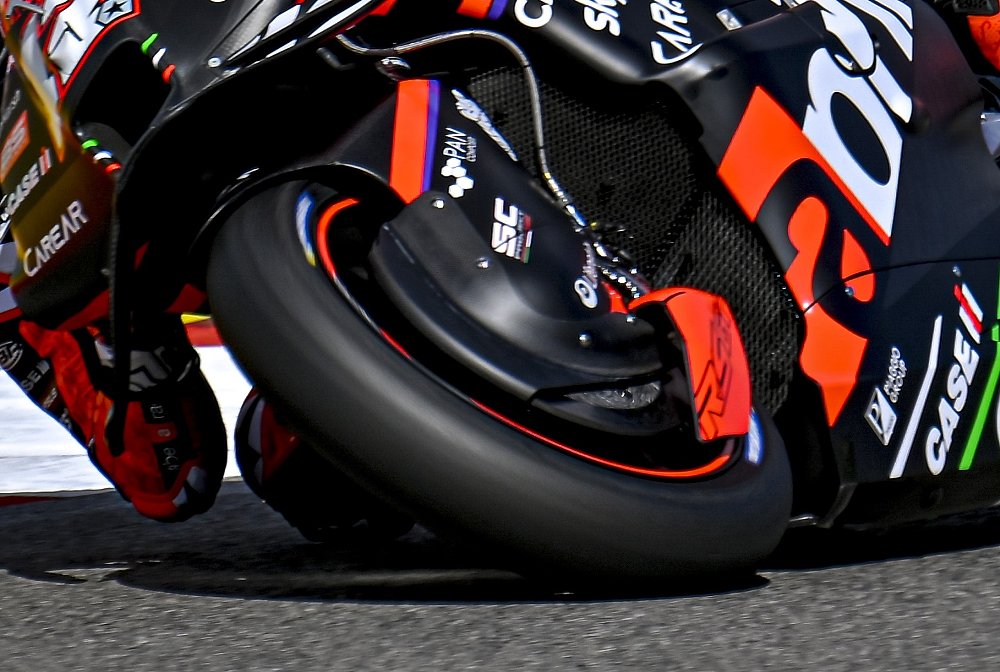
But you don't have to be an aerodynamicist or have a sophisticated tire pressure sensor to see the biggest change. As I reported last year, the 2023 season will be the longest ever, not just because the calendar has been expanded to 21 rounds, with new races in India and Kazakhstan, but also the addition of shorter Saturday sprint races. That means the racers will compete 42 times this year, surpassing even the duty of World Superbike racers who run three times in a weekend.
It's not just the number of races, but the amount of travel and time away from home for racers and their crews. From the September 23 race in India to the penultimate race in Qatar on November 18, MotoGP will visit seven different countries across Asia and the Middle East.
2023 will be like no other year in the history of grand prix motorcycle racing, and that alone injects a big dose of uncertainty.
How to watch MotoGP
In the United States, all 21 races will be broadcast on NBC or CNBC. Only the Red Bull Grand Prix of the Americas will be shown live, on Sunday, April 16, while the others will be recorded. It isn't clear what coverage of the Saturday sprint races NBC will include.
The full coverage paid option is the MotoGP VideoPass streaming service, which costs €139.99 for the entire season and includes all the races and practice sessions, as well as video on demand.

 Membership
Membership







